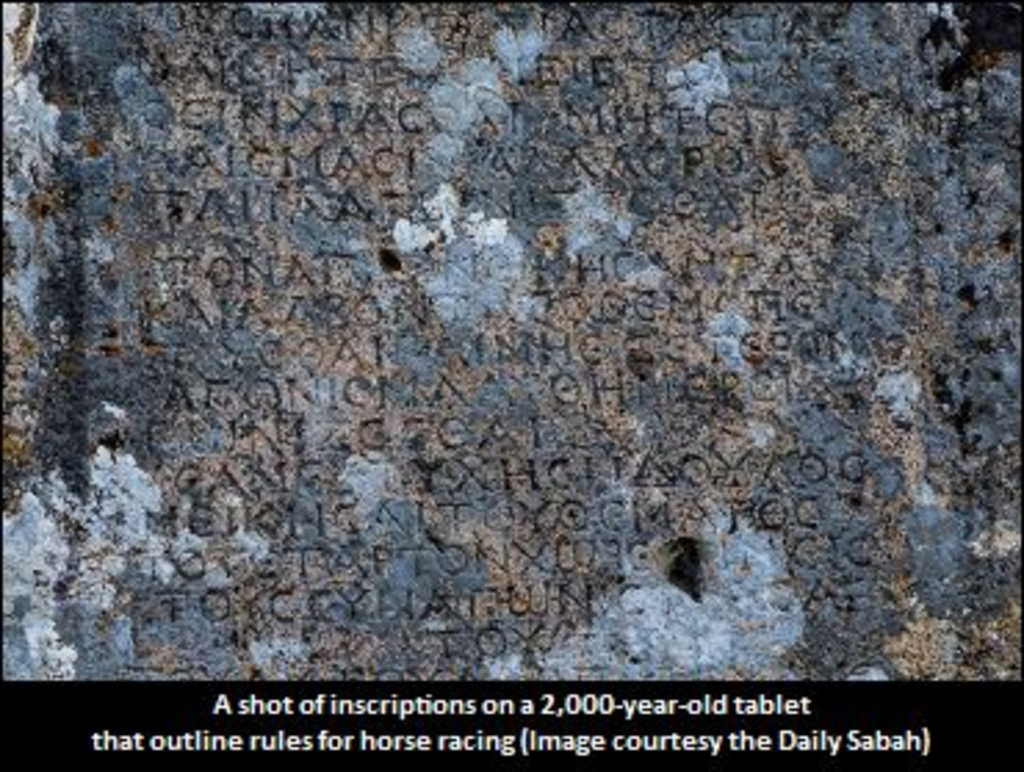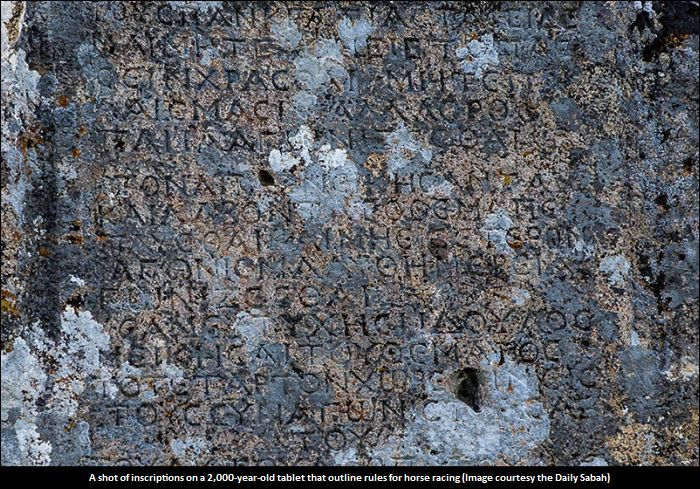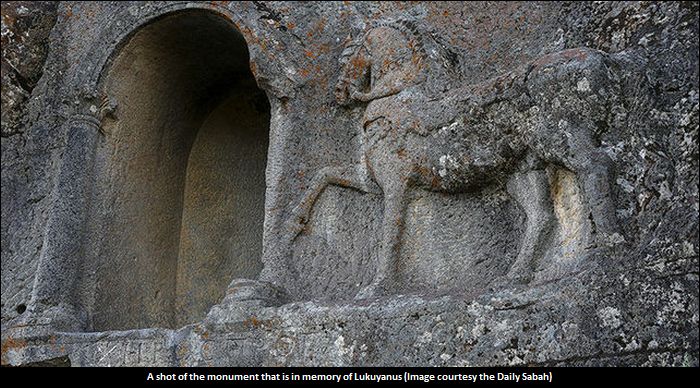Ancient Racing Rules Deciphered

 Earlier this week, a news outlet based out of Turkey ran an item about the deciphering of a 2,000-year-old tablet that was found in central Anatolia. The inscriptions on the tablet were rules for horse racing.
Earlier this week, a news outlet based out of Turkey ran an item about the deciphering of a 2,000-year-old tablet that was found in central Anatolia. The inscriptions on the tablet were rules for horse racing.
The article by the Daily Sabah states that the rules on the tablet outlined that horse racing is to be based on fair play and social inclusion.

The article goes on to explain that the tablet was carved into a monument that was in memory of a Roman jockey named Lukuyanus, who is believed to have passed away at a young age. To be specific, the monument is located in the Beyşehir district of Konya, which is a province in central Turkey.
The Daily Sabah piece states that the tablet is located next to a monument of a horse that honours Lukuyanus. The article has quoted Konya Selçuk University Professor Hasan Bahar as saying that the monument, which is referred to as “Horse Rock” by locals, is located near an ancient hippodrome.
"Lukuyanus was a Roman jockey, and this structure here shows this was a place dedicated to horse racing and horse breeding. Hittites used to build monuments here in a tribute to the mountains they deemed holy and we believe horse racing was a dedication to those holy mountains as well in the Roman era," Professor Bahar was quoted as saying.

The professor went on state that the rules outlined on the inscription explain that "a horse cannot compete in another race if it finishes first in any given race. An owner cannot have another horse compete in one race if he or she owns a previous winner."
Professor Bahar was also quoted as saying that the rules are "a sign of gentlemanly conduct in the races” that “offers a chance for others to win as well, unlike modern races.”
(With files from the Daily Sabah)

